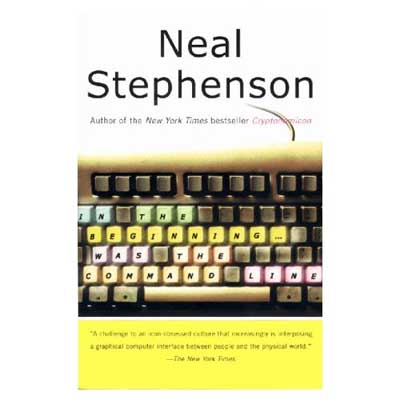Geeky Mom : Why am I blogging?. Been there before. Sooner or later
all non-pseudonomenous bloggers are faced with the same dilemmas.
There’s really no answer or advice to give except : blog when you feel
like it, if not do something different, after all its just one of those
billion of blogs around.
Texmaker : another
LaTeX-frontend, possibly having a few extras such as : a structure-pane
including labels you gave to formulas, theorems etc. (click on them
brings you to them). Intend to use it now as I’m in another rewrite of
the never-ending-book..
Microformats : “Designed for
humans first and machines second, microformats are a set of simple, open
data formats built upon existing and widely adopted standards.” May
have another look.
Quicksilver : a recurring
link. At times when I feel learning key-strokes may save me a lot of
time I have (another) go at Quicksilver. Last week, Ive reinstalled this
blog more or less post by post and used keystrokes to send a line in the
SQL-file of the database dump of NEB as a clipping to Scrivener to
MultiMarkdown it further. I used the app Service Scrubber
to define my own key-strokes. Must have another go at Quicksilver soon.
Im sure it distinguishes ‚”power mac users” from the rest of
us.
List of GTDTools : a good list of GTD-software. I’m probably just
too chaotic for GTD to improve my workflow but somehow I cannot resist
trying some of these things out.
LifeDEV : One of those sites that tells
me I should take GTD more seriously
DoIt : One of
these GTD-tools. It is said to go well with Quicksilver, so maybe, one
day.
Think
: Here a little seemingly completely useless tool which works well (at
least for me). No, it does not make you think, but at least it helps you
while you are thinking (or doing anything a bit focussed). Install it
and enjoy! The principle is that it just blocks out all other open
windows (and there are keystrokes (yes, again) to get you quickly in
and out.) Besides, it looks great. It’s in my dock and this says it
all
Thinkature :
a brainstorming tool. Dont know why I did bookmark this. Perhaps one
day, a few years from now
Stafford Talk :
a talk by Toby Stafford I came across by accident. Maybe there are other
interesting talks on the site?
Science Scouts : a great
idea! Give yourself badges for how well you do science (or talk/write
about science). Have to collect my badges soon. I’m sure this only
works for people with a scouting-history, but who
knows?
MacResearch : Here’s a site
that may become useful. MacResearch.org is an open and independent
community for scientists using Mac OS X and related hardware in their
research. It is the mission of this site to cultivate a knowledgeable
and vibrant community of researchers to exchange ideas and information,
and collectively escalate the prominence of Apple technologies in the
scientific research community. They have some interesting articles
and tutorials on e.g. DevonThink and BibDesk etc. Worth to
revisit.
Jennifer in love : well‚ should I say something about this?
probably best not.
Breakthrough CLI : another pamphlet in favor of the Command Line! A
must read for those who perfer GUIs to CLIs.
<
p>CLI – the
site : Rod is working hard on CLI-20. Whenever he releases version
2.0, neverendingbooks will be among the first sites to run it. I still
love the idea.
Why do I bother? : an n-category post I got briefly interested in,
but was somehow flooded by professional
math-philosophers
Newton Legacy Reviewed : just that, a first review
on the next bookmark.
the Newton
Legacy : a free online book, a murder mystery with a physics touch.
Perhaps this is the best investment of time/energy : write a popular
science book rather than another paper. Read half way through it (sorry
but not the best prose Ive read so far), may continue but was held up
reading a (real) murder mystery Equinox featuring also Newton and
alchemy (must be in the air somehow), also not the best mystery read
so far
Stalking with Googleearth
: no comment
(to be continued)
Leave a Comment